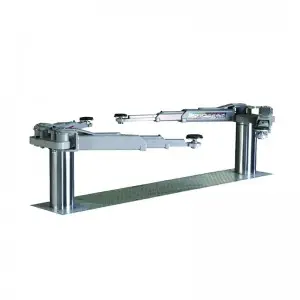
Understanding the Mechanics and Utility of Cylinders: Unveiling the Versatile Shape That Powers Numerous Industries
Cylinders are a fundamental geometric shape that finds extensive use across various industries due to their versatility and functional properties. A three-dimensional object characterized by two parallel circular bases and a curved surface connecting them, cylinders are widely employed in engineering, manufacturing, and everyday applications. With a plethora of forms and sizes, cylinders can be found in everything from engines and hydraulic systems to household items and scientific instruments.
The mechanics of a cylinder lie in its inherent symmetry and uniformity. By maintaining a constant cross-sectional area throughout its length, the shape enables efficient energy distribution and transfer. This property allows cylinders to perform a wide range of functions, making them vital components in various mechanical systems.
One of the most prominent applications of cylinders can be found in internal combustion engines. Specifically, in reciprocating engines, cylinders house pistons that move in a reciprocating motion. As the piston goes up and down, it rotates the crankshaft, ultimately converting linear motion into rotational motion. This process generates mechanical energy to power vehicles, machinery, and a multitude of other devices.
Cylinders are also extensively utilized in hydraulic systems. Hydraulic cylinders, often referred to as linear actuators, are responsible for creating linear force and motion in hydraulic machinery. By converting the energy stored in hydraulic fluid into mechanical force, these cylinders can lift, push, or pull heavy loads with precision and power. They are commonly found in construction equipment, manufacturing machinery, and even in robotics, where precise movement is crucial.

Understanding the Mechanics and Utility of Cylinders: Unveiling the Versatile Shape That Powers Numerous Industries
Moreover, the fundamental principles of fluid dynamics contribute to the functionality of cylinders in numerous systems. Pneumatic systems, similar to hydraulic systems, employ cylinders as actuators; however, they use compressed air instead of hydraulic fluid. Pneumatic cylinders are an essential component in automation applications, where controlled and rapid movement is critical. From conveyor belts to assembly lines and industrial robots, cylinders power an array of automated operations.
Beyond industrial applications, cylinders are ingrained in our daily lives. Gas cylinders, for example, are commonly used for storing and transporting gases such as propane, oxygen, or acetylene. These cylinders are designed to withstand high pressures, ensuring safe storage and convenient portability. Gas cylinders are indispensable for cooking, welding, medical applications, and in various industries that require the use of compressed gases.
Furthermore, the shape of cylinders has a profound effect on our modern world. The advent of gas and oil exploration and the subsequent demand for storage led to the development of cylindrical tanks. These massive structures, capable of storing vast quantities of liquids or gases, play a pivotal role in industries such as energy, chemicals, and water treatment. Their cylindrical shape allows for even distribution of pressure, ensuring structural integrity and stability.

Understanding the Mechanics and Utility of Cylinders: Unveiling the Versatile Shape That Powers Numerous Industries
In addition to their functional properties, cylinders have also been acknowledged for their aesthetic appeal. Architects and designers frequently incorporate cylindrical shapes in their creations for both structural and visual purposes. From iconic skyscrapers like the Gherkin in London to contemporary furniture design, cylinders offer a timeless and elegant form that complements modern architectural trends.
In conclusion, the cylinder is an immensely versatile shape with a vast range of applications across various industries. Its symmetrical nature, uniform cross-section, and application in mechanical systems make it an indispensable component in engineering, manufacturing, and everyday life. From propelling vehicles to powering hydraulic and pneumatic machinery, cylinders continue to be vital in enabling progress and innovation.quickjack portable car lift
